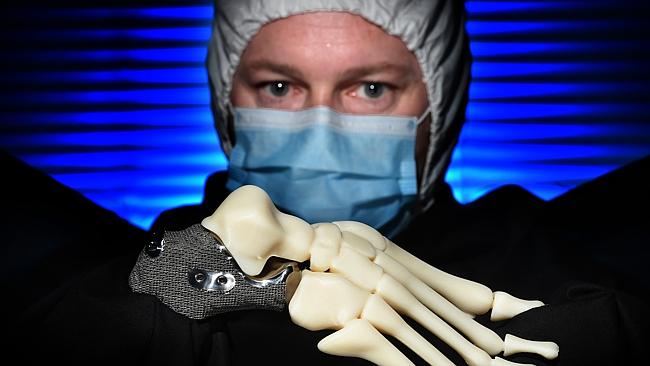A Malaysia-born orthopaedic surgeon, Professor Peter Choong has lead a medical team from St Vincent’s Hospital in Melbourne, Australia to replace Len Chandler’s heel with a 3D-printed titanium replica. It is believed that the surgery is the first procedure of its kind in the world.
The 71-year-old Chandler has suffered a rare cartilage cancer on his right heel. According to Herald Sun, patients who suffered from advanced cancer in the calcaneus will often risk to lose the leg below the knee. It is because the highly complex bone structure makes it almost impossible to replace the heel.
Chandler, a former builder was diagnosed in June and doctors from the St Vincent’s Hospital told him that surgery was the only treatment option and he could have his leg below the knee amputated.
“I went to so many different specialists, physiotherapists, podiatrists and acupuncturists and I was just about to give up,” he was quoted by Mail Online. He was then referred to Professor Choong, who was developing techniques with 3D printing, after having his X-ray taken at a local hospital.
Prof Choong suggested to implant a 3D-printed titanium heel instead of amputation. According to Herald Sun, the process has been used for simpler non-weight-bearing structures before such as sections of skull. Prof Choong who has faith in the recent technical advances believed that a new-generation implant was possible.
“Science advances have allowed us to consider 3D printing of bones and we were able to get information from Len’s foot and use that to tell the computers precisely how big his foot is, and reproduce that using the new 3D technology,” Prof Choong said in a statement released by the hospital.
“Going from the possibility of an amputation to where you preserve the limb on account of one (replacement) bone is rewarding if you can achieve it,” he added.
“What we try to do with the new prosthesis is simulate the sorts of functions that his bone would have. First of all the shape, strength, also parts of it have to be nice and polished where it has to run or articulate, as we say, against different other bones.
“For example, you have the shin coming down on to it, you have the foot bones in front of it and they provide very complex surfaces that you could not normally match with,” Prof Choong was quoted by ABC News.
According to the hospital, not only the implant required a perfect replica of Chandler’s own bone, but the procedure also need an ultra-smooth surface so it could fit in seamlessly with other bones, tendons and muscles. In addition, the replica also needs to be porous to allow tissue to grow into it for the body to accept the new structure.
Herald Sun wrote that by scanning Chandler’s perfectly healthy left foot, the medical team was able to make a 3D scan for the right foot in preparation to send the data to Melbourne-based implant manufacturer Anatomics, where they created a design for a new heel bone for Chandler. CSIRO experts came onto the scene with their high tech Arcam 3D printer, which manufactured a titanium heel implant from the design.
“I didn’t know how good it was going to be – I don’t think Prof Choong knew how good I’d be – but I’m going very well.
“Prof Choong said we could take the risk, and I had nothing to lose. I was hesitant and I didn’t know whether it would work, but I had to try it,” Chandler who was able to return to home after 12 days in hospital said.
Titanium is commonly used to as the replacement material for bones since the material usually does not cause any adverse reaction. Last month, a Chinese man had a 3D-printed titanium mesh implanted on his left cranium. Earlier in this year, the first ever complete 3D-printed skull was implanted on a woman.
Beside skull, medical researchers had used the technology to create an essential bone in the spine of a 12-year-old Chinese boy last August. It was the first 3D-printed vertebra as an implant for orthopeadic spine surgery ever performed in the world, according to Business Insider.
